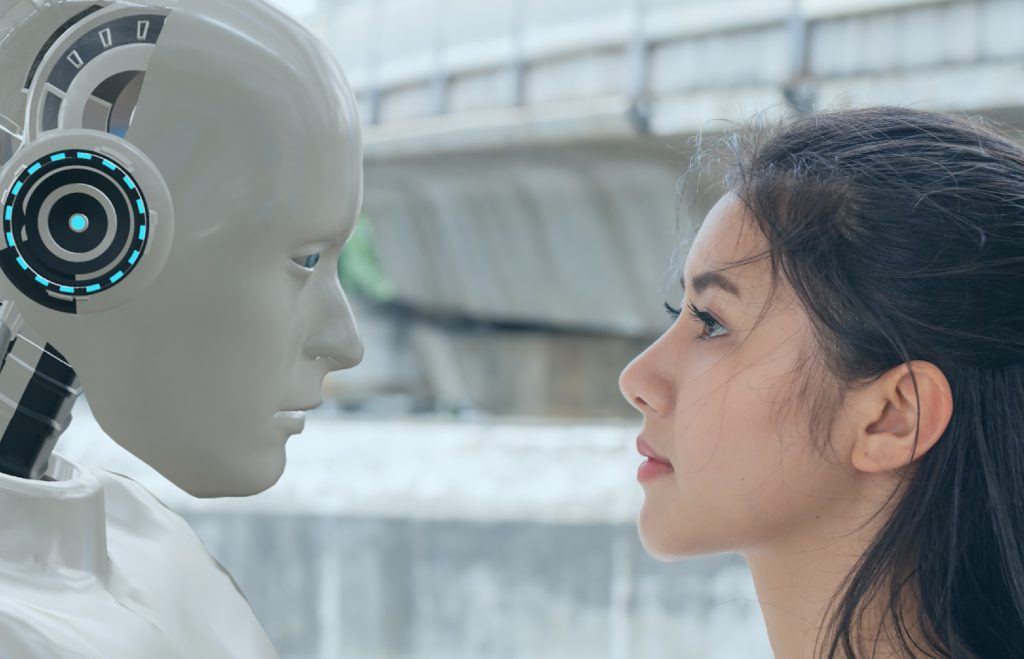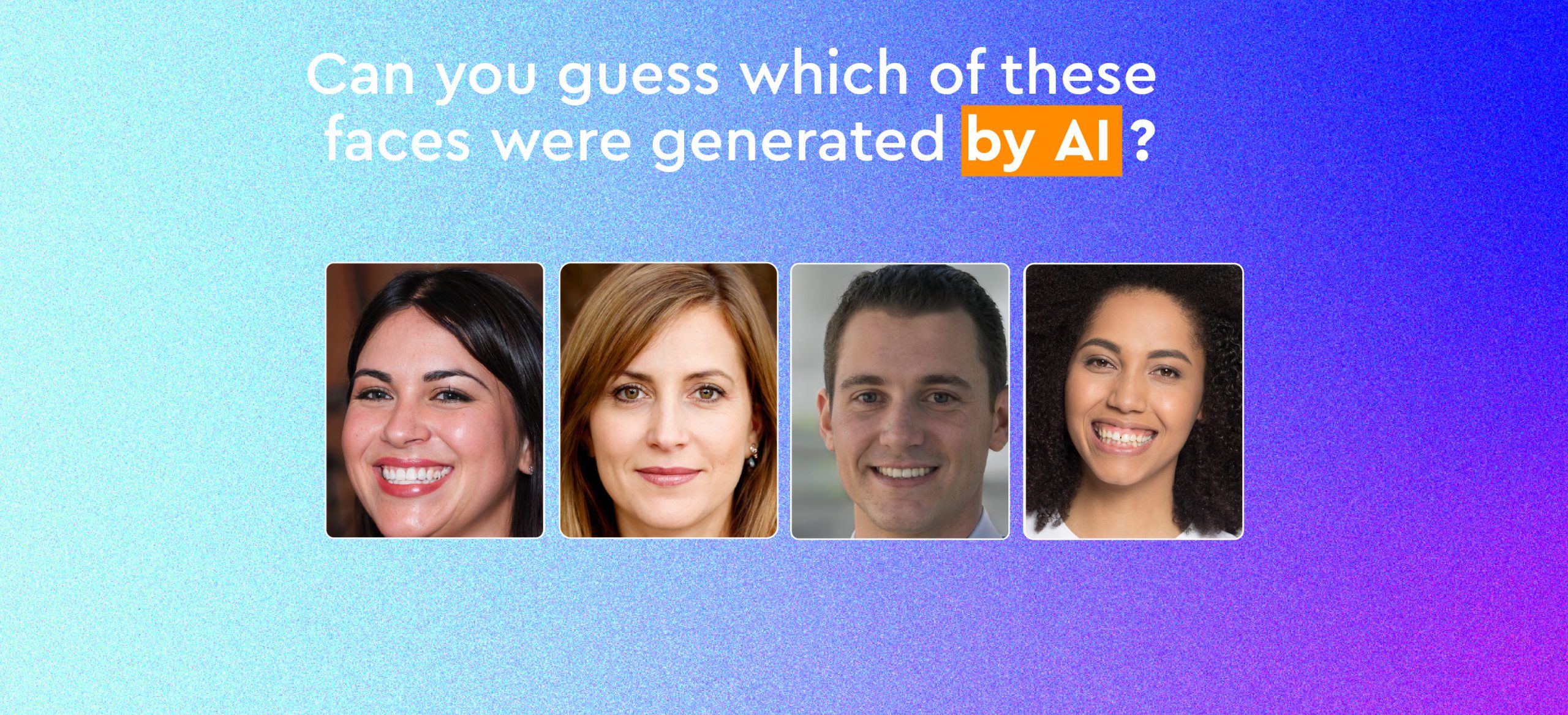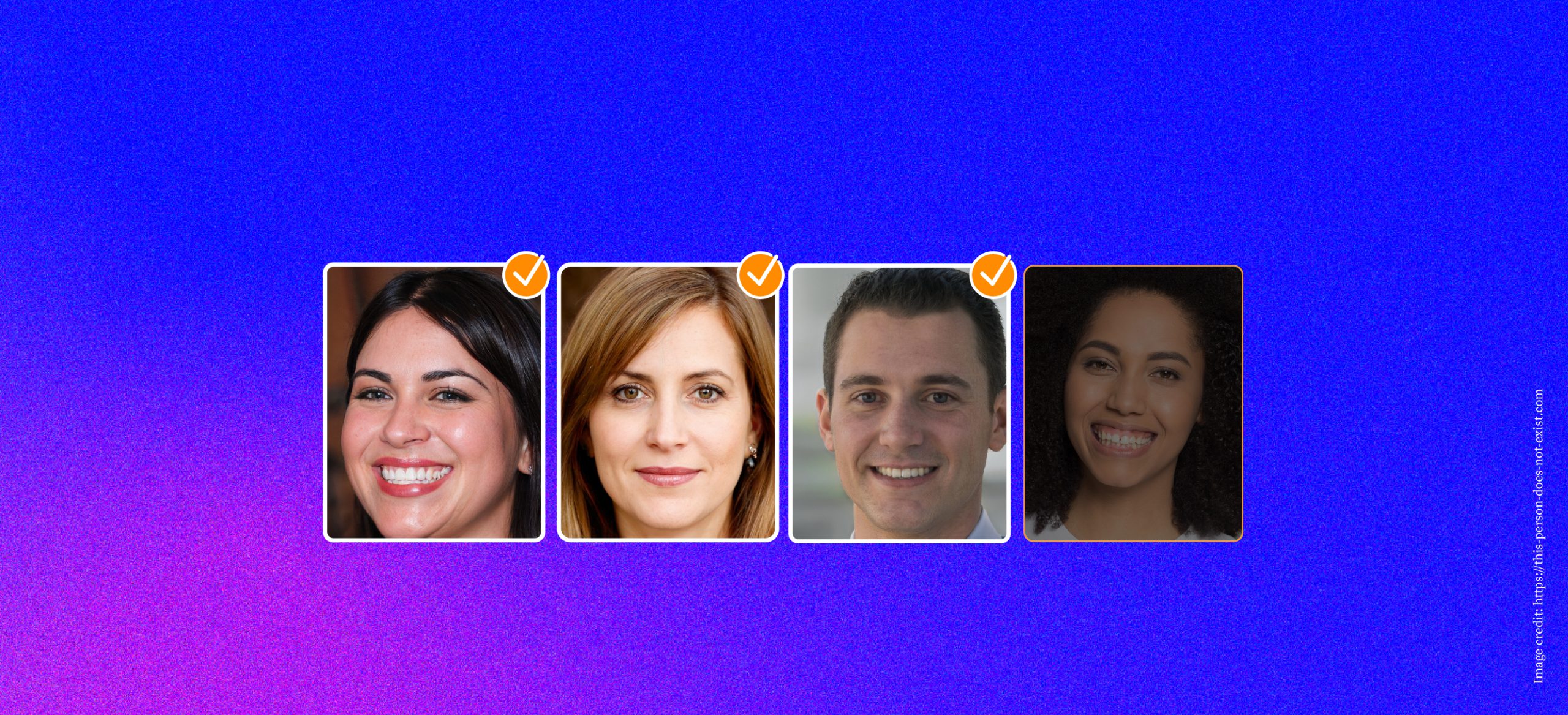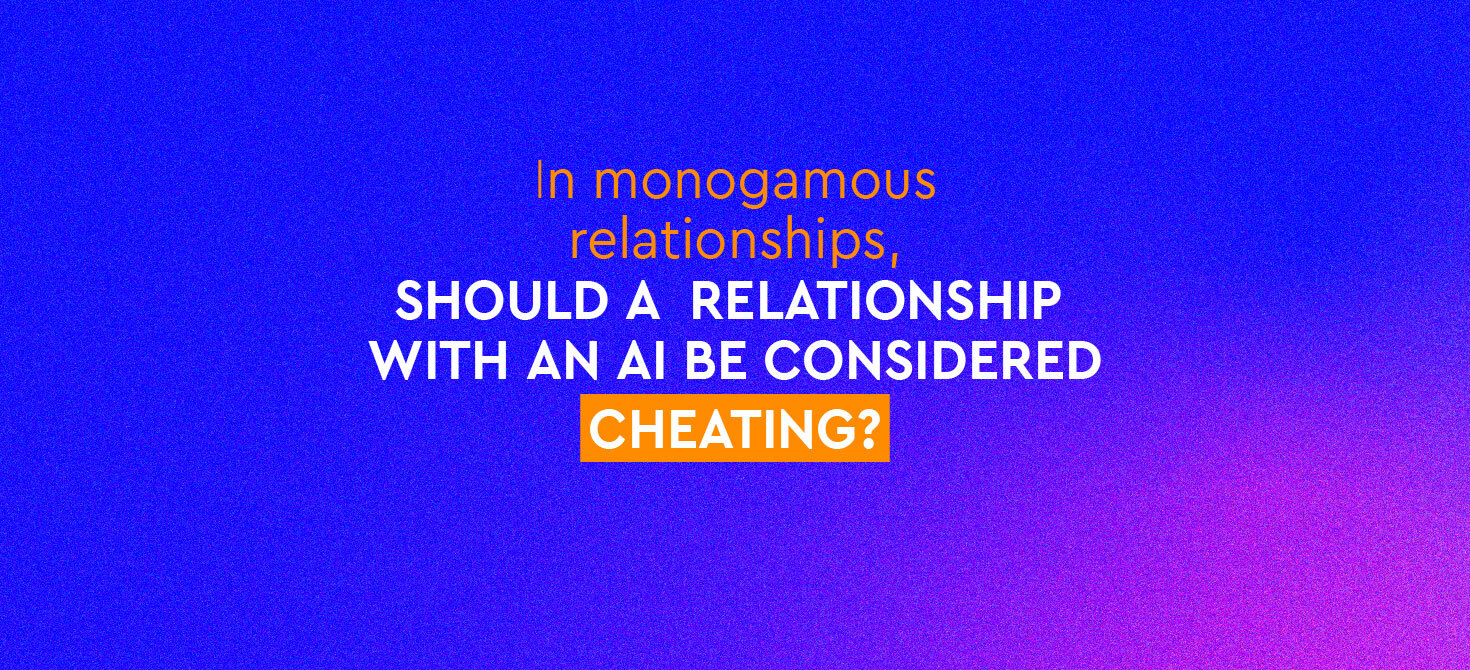

Are These People Real or AI?
Are These People Real or AI?
In the 21st century, the human face is an AI battleground, and the ability to recognize faces and read expressions is no longer only human
The faces in this Knowledge Nugget are the products of generative adversarial networks (or GANs), machine learning frameworks designed to generate novel images. As artificial intelligence‘s ability to create realistic faces improves, we can expect the emergence of algorithms designed to distinguish real faces from those made by other algorithms, to be used in facial recognition technologies. In the twenty-first century, the human face is an AI battleground, and the human ability to recognize faces and read expressions is no longer only human.
But the creation of human-like AI is not limited to human faces. The race for creating and improving algorithms that emulate human thinking and communication is on. While you still can’t date an AI as impressive as the one in Spike Jonze’s Her, many people around the world are already having relationships with AI dating bots.

Would it be considered cheating if someone was in a monogamous relationship but had another relationship with an AI? That may depend on how “real” we consider this AI relationship to be. Some people dream and fantasize about other people and can have feelings for them, but as long as it’s “in their heads” we usually don’t consider that to be cheating. Is chatting with an AI any different?
That’s a question that will only become more prevalent in the coming decades, when AI has improved to a level where they may – in some ways – be better partners than our human partners. Because if algorithms can learn and know us better than we know ourselves, our AI partners could be the perfect companions – they will always have the perfect thing to say and will know exactly how to make us happy. So, we may have to start asking ourselves if there is something that is uniquely human, that AI could never have, and if so – what is it?
Group Activity
- Divide the group into several teams.
- Pick one of the questions from the list below and let each team discuss it and then present their thoughts to the group; Alternatively, assign each team with a different question, and when they present it to the group ask the remaining teams for their thoughts as well.
Questions
- With AI, we can now create videos of fake people and even create bots that masquerade as people on social media. What might be the consequences of this? Should such activities be prohibited by law?
- In monogamous relationships, should a relationship with an AI be considered cheating?
To delve deeper, give each team an article from the list below (you can assign all of the articles or choose between them). Ask each team to summarize the article’s main argument(s) and present it to the group. Things to note and address: where was the article published (a magazine? A news website? An academic journal?) Who is the author (a columnist? An academic?). Each team can also turn the article’s core argument into a slogan (“AI deletes the I”, “The solution is evolution”, etc.). Ask each team to present their thoughts on the question to the group.- Article 1: Love in the time of AI: meet the people falling for scripted robots. The Guardian, September 2018
- Article 2: Would You Date a Droid? Daily Mail, October 2020
- Imagine a future virtual reality environment where everything is generated by AI, down to the finest details: people, houses, roads, cars, mountains, rivers, trees, animals. Your avatar can interact with them exactly as you interact with the “real” world outside, and they are so well designed and programmed that you have no real capability to distinguish them from “real” objects, animals and people. Is there something missing in this experience, compared with the “real” world? If so, what? If not, what distinguishes this reality from the “real” reality?
- How would you feel if you found out you were actually already living in a computer simulation?
To delve deeper, give each team an article from the list below (you can assign all of the articles or choose between them). Ask each team to summarize the article’s main argument(s) and present it to the group. Things to note and address: where was the article published (a magazine? A news website? An academic journal?) Who is the author (a columnist? An academic?). Each team can also turn the article’s core argument into a slogan (“AI deletes the I”, “The solution is evolution”, etc.). Ask each team to present their thoughts on the question to the group.- Article 1: Are we living in a computer simulation? I don’t know. Probably. Vox, October 2020
- Article 2: Why Reality Is Not A Video Game — And Why It Matters. NPR, March 2017
- Article 3: Are We Living in a Computer Simulation? Scientific American, April 2016
- Questions 2 and 3 are a modern-day version of Plato’s Cave analogy, which is the age-old debate that asks whether the world we perceive is “true reality” or not, whether we can ever know that for certain, and whether there is such a thing at all. See here a short explainer video about it. For a modern version of it set in a digital world, watch The Matrix (1999).
- Face recognition and perception is an important human feature, crucial for societal constructs. We use it to tell the sex, age, race, mood and intent of the person standing in front of us, thus deciding how to engage with them in a matter of a heartbeat. What do you think will happen if we outsource this ability to computers, and let the AI do it for us?






